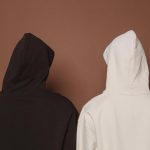When it comes to quilting, the backing fabric is like the sturdy foundation of a house. It's the support that holds everything together.
In 'Needle & Thread: How Much Backing for Your Queen Size Quilt,' you'll master the art of calculating just the right amount of backing fabric for your project.
Understanding queen size quilt dimensions, accounting for seams and shrinkage, and choosing the perfect fabric width are all essential steps in achieving a beautifully finished quilt.
This guide will walk you through the process in an informative, conversational, and formal style, providing you with the expertise you seek.
Let's dive into the world of quilting mastery together.
Key Takeaways
- The standard queen size quilt should measure at least 60 inches wide by 80 inches long to provide full coverage.
- Quilters often make their quilts slightly larger to accommodate for shrinkage.
- Quilt backing options include single piece fabric, pieced backing, or wide backing fabric.
- When calculating backing fabric requirements, it is important to account for seams, shrinkage, and the specific quilting style and design preferences.
Understanding Queen Size Quilt Dimensions
When planning your queen size quilt, you should consider the standard dimensions to ensure it fits your bed properly. A standard queen size mattress measures 60 inches wide by 80 inches long, so your quilt should be at least this size to provide full coverage. However, many quilters prefer to make their quilts slightly larger to accommodate for any shrinkage that may occur during the quilting process.
When it comes to quilt backing options, there are several choices to consider. You can use a single piece of fabric that matches the top of your quilt, or you can create a pieced backing using coordinating fabrics. Another option is to use a wide backing fabric specifically designed for quilting, which comes in various colors and patterns to complement your quilt top.
Now, let's talk about the queen size quilt backing yardage. For a standard queen size quilt, you'll need a backing that measures at least 88 inches by 108 inches to allow for overhang and proper coverage. This means you'll need approximately 7 3/4 yards of 44-45 inch wide fabric for your quilt backing.
Understanding these dimensions and yardage requirements will help you plan and execute your queen size quilt with precision and confidence.
Calculating Backing Fabric Requirements
To calculate the backing fabric requirements for your queen size quilt, measure the quilt top's width and length, then add extra inches for overhang and quilting adjustments. Once you have these measurements, it's time to determine the fabric yardage needed for your quilt's backing.
Most quilting fabrics come in 40-42 inch widths, so for a queen size quilt, you'll likely need to piece together the backing fabric. Here's a simple measuring process to calculate the fabric yardage required:
Add 8 inches to both the width and length of your quilt top to allow for a 4-inch overhang on each side. For example, if your quilt top measures 90 x 90 inches, you'll need a backing fabric that measures at least 98 x 98 inches.
Next, if your chosen backing fabric is 42 inches wide, divide the total length needed (98 inches) by 36 to get the yardage required. In this case, you'd need 2.72 yards, or approximately 3 yards to accommodate for any cutting or piecing errors.
Keep in mind that this is a basic estimate, and your specific quilting style and design preferences may require additional fabric.
Accounting for Seams and Shrinkage
You will need to account for approximately 1/2 inch seams and potential fabric shrinkage when calculating the backing fabric requirements for your queen size quilt. The seam allowance is the extra bit of fabric on the edges of each quilt block that allows for stitching the blocks together without cutting off any important parts of the pattern.
When calculating your backing fabric needs, remember to include the seam allowance around the entire quilt top. This means adding at least 1 inch to both the length and width of your quilt top measurements.
Fabric shrinkage can occur when the quilt is washed for the first time. It's essential to prewash your fabric before starting your quilt to account for any potential shrinkage. Typically, fabric can shrink by about 3-5% after the first wash, although this can vary depending on the type of fabric.
To accommodate for potential shrinkage, it's advisable to add a few extra inches to the backing fabric, especially if you're using natural fibers like cotton. By factoring in both seam allowance and potential fabric shrinkage, you can ensure that your backing fabric will be sufficient to complete your beautiful queen size quilt.
Factoring in Quilting Design and Style
Once you've settled on the quilting design and style, consider how it will impact the amount of backing fabric needed for your queen size quilt. Quilting techniques and color coordination play a crucial role in determining the backing fabric requirements. Different quilting styles and designs may necessitate varying amounts of fabric, so it's essential to factor this in when planning your quilt.
| Quilting Technique | Impact on Backing Fabric |
|---|---|
| All-over quilting | Requires more backing fabric to accommodate the continuous design throughout the quilt. |
| Custom quilting | May require additional backing fabric depending on the intricacy and density of the quilting design. |
| Color coordination | Choosing a backing fabric that complements or contrasts with the quilt top can affect the amount needed. |
| Minimal quilting | Utilizes less backing fabric, making it a suitable option if you're aiming to conserve material. |
When selecting a quilting design and style, be mindful of how it will influence the backing fabric needed for your queen size quilt. By factoring in the impact of different quilting techniques and considering color coordination, you can ensure that you have the right amount of backing fabric to bring your quilt to life.
Choosing the Right Backing Fabric Width
When it comes to choosing the right backing fabric width for your queen size quilt, there are a few key points to consider. Understanding the various fabric width options available and how to calculate the dimensions needed for your quilt backing will help you make an informed decision.
Let's explore the different aspects of backing fabric width and how to ensure you have the right amount for your project.
Backing Fabric Width Options
Consider the quilt's dimensions and the backing fabric width options available to determine the most suitable choice for your queen size quilt.
When it comes to choosing the right backing fabric width, there are a few options to consider:
- Fabric yardage: Calculate the total yardage required for the backing fabric by adding extra inches to the quilt's measurements for overhang and seam allowance.
- Standard fabric width: Keep in mind the standard width of quilting fabrics, typically 42 to 44 inches wide, and how it will align with your quilt's size to minimize the need for additional seaming.
- Cutting techniques: If your quilt exceeds the standard fabric width, explore cutting and seaming techniques to create a seamless and visually appealing backing for your queen size quilt.
Choosing the right backing fabric width is crucial for achieving a polished and professional finish for your quilt.
Calculating Quilt Backing Dimensions
To calculate the quilt backing dimensions for your queen size quilt, assess the available fabric width options and factor in the total yardage required, ensuring a polished and professional finish.
When choosing the fabric width, consider the width of your quilt top and the fabric options available. For a queen size quilt, the standard fabric width is around 108 inches. However, if your quilt top is wider, you may need to piece the backing together. This leads to seaming considerations.
If piecing the backing, add an extra 3-6 inches to each fabric length to accommodate for seam allowances and ensure that the final dimensions are sufficient.
Adjusting for Pattern Matching
Adjusting for pattern matching requires careful attention to fabric alignment and seam placement. When working with a quilt top that has a specific pattern, it's essential to ensure that the fabric layout and seam placement complement the design. Here's how to adjust for pattern matching:
- Pattern Alignment: Pay close attention to the pattern's direction and placement on the fabric. If the quilt design features specific motifs or directional prints, take the time to align the fabric pieces accordingly to maintain the intended visual effect.
- Seam Placement: Consider the placement of seams in relation to the quilt pattern. Aim to position seams in areas where they won't disrupt the flow of the design or create visual distractions. Strategic seam placement can help maintain the coherence of the pattern across the quilt top.
- Mock Layout: Before committing to cutting and sewing the fabric, consider creating a mock layout by arranging the fabric pieces to see how the pattern aligns and flows across the quilt top. This step allows you to make any necessary adjustments before assembling the quilt.
Tips for Efficient Backing Fabric Preparation
To efficiently prepare the backing fabric for your queen size quilt, assess the dimensions and layout of your quilt top to determine the required yardage of fabric. Once you have the necessary yardage, it's time to focus on efficient cutting.
Lay out your fabric on a clean, flat surface, ensuring it's smooth and free of wrinkles. Use a rotary cutter and cutting mat for precision. If your quilt requires multiple lengths of fabric, consider cutting and sewing the pieces together with a precise seam allowance to minimize waste.
Proper storage of the backing fabric is also crucial. If you need to store the fabric before it's ready for use, fold it neatly and store it in a cool, dry place to prevent wrinkles and odors. Additionally, make sure to protect it from dust and direct sunlight.
Frequently Asked Questions
Can I Use Multiple Pieces of Fabric for the Backing of My Queen Size Quilt, or Does It Need to Be One Continuous Piece?
Yes, you can use multiple pieces of fabric for the backing of your queen size quilt. It doesn't have to be one continuous piece. This gives you more fabric choices and can help avoid preparation mistakes.
How Do I Determine the Best Type of Backing Fabric for My Specific Quilting Project?
When choosing fabric for your quilting project, consider the specific techniques you'll be using. Look for a fabric that complements the style and design of your quilt. Different quilting techniques may benefit from particular types of backing fabric.
What Are Some Common Mistakes to Avoid When Preparing the Backing Fabric for a Queen Size Quilt?
When preparing the backing fabric for a queen size quilt, common mistakes to avoid include improper fabric selection, inadequate preparation, and not allowing for enough seam allowance. Take care to choose the right fabric and prepare it thoroughly.
Are There Any Special Considerations for Backing Fabric if I Plan to Hand Quilt or Use a Long Arm Quilting Machine?
When hand quilting or using a long arm machine, special considerations for backing fabric are crucial. Determine fabric type, avoid common mistakes, and consider using multiple pieces for larger quilts. Properly store and care for fabric to ensure successful quilting.
Can You Provide Some Tips for Storing and Caring for the Backing Fabric Before and After Quilting?
When storing fabric for quilting, ensure it's in a cool, dry place to avoid mildew or fading. Before quilting, gently press the backing fabric to remove wrinkles and creases. This will help ensure a smooth and professional finish to your quilt.
- What Is Pochampally Ikat? a Journey to India’s Silk City - June 27, 2025
- What Is Pochampally Ikat? a Journey to India’s Silk City - June 27, 2025
- What Is Pochampally Ikat? a Journey to India’s Silk City - June 27, 2025





